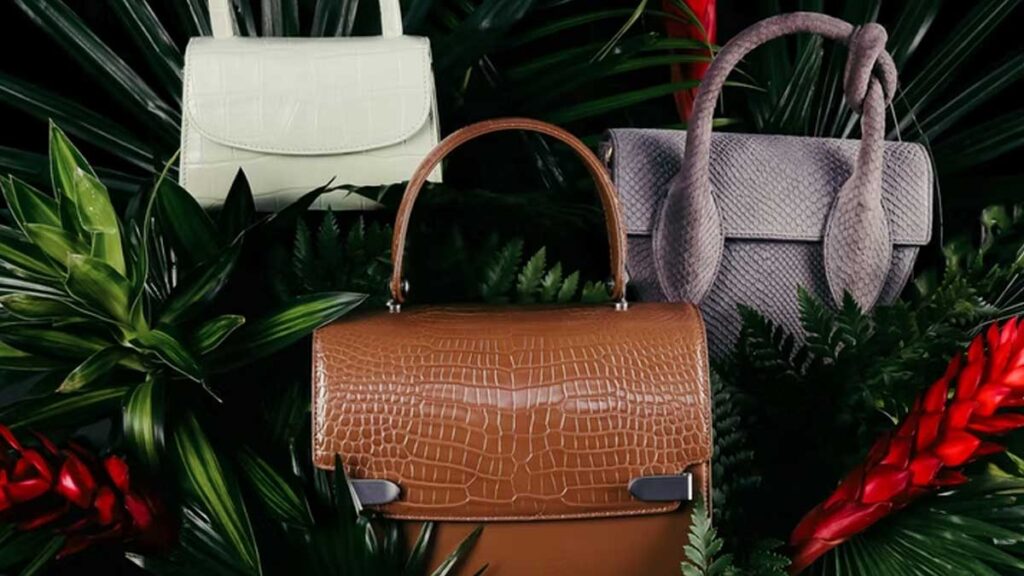
In 2024, the luxury handbag market is estimated to be worth US$25,642.20 million. Projections suggest that the market will surpass a valuation of US$47,237.70 million by 2034, with a growth rate of 6.30% expected from 2024 to 2034.
Social media and specialized luxury marketplaces offer products through a direct-to-consumer channel, reducing reliance on traditional retail channels and allowing them greater control over branding and client interactions.
Strategic collaborations with artists, influencers, and other companies are expected to generate major market potential by supporting brands in reaching new audiences, increasing brand image, and driving innovation.
Affordability, environmental concerns, and a desire for vintage and limited-edition designs are driving growth in the pre-owned luxury handbag market. Brands are collaborating with resale platforms and creating certified pre-owned programs to enter this booming market.
Request a Sample Report and Explore New Growth Opportunities Now! https://www.futuremarketinsights.com/reports/sample/rep-gb-18753
The launch of luxury handbags by leading bag design businesses has sparked significant interest and popularity among consumers with greater spending capacity and a more defined sense of style and fashion. The luxury handbag market is being transformed by technology.
Brands are using augmented and virtual reality to highlight products and improve the buying experience. Social media and influencer marketing are important in increasing brand recognition and engagement.
“The changing client preferences, technological improvements, and the expanded reach of luxury brands are expected to drive the demand for luxury bags in the next ten years. In this unpredictable environment, brands that can adapt to these trends and capitalize on emerging possibilities will thrive,” says an analyst at FMI.
Business Growth Drivers:
- Brand Prestige and Heritage: Luxury handbags are often associated with prestigious brands that have a long-standing heritage of craftsmanship and exclusivity. Consumers are willing to pay a premium for the status and quality associated with these brands, thereby driving growth in the market.
- Increasing Affluence and Disposable Income: As global wealth continues to rise, particularly in emerging economies, there is a growing segment of affluent consumers with higher disposable incomes. These consumers seek to indulge in luxury goods like handbags as a means of expressing their status and lifestyle, fueling market growth.
- Shift Towards Experiential Luxury: Modern luxury consumers increasingly prioritize experiences over material possessions. Luxury handbags offer an experiential aspect, representing not just a product but a lifestyle and identity. This shift in consumer preferences drives growth as luxury handbags become more than just functional accessories but symbols of personal expression.
- Rise of Digital Commerce: The proliferation of e-commerce platforms has significantly expanded the reach of luxury handbag brands, allowing them to tap into global markets and reach a wider audience. Online sales channels provide convenience and accessibility, attracting new customers and driving growth in the luxury handbag market.
- Innovative Design and Limited Edition Releases: Luxury handbag brands continually innovate by introducing new designs, collaborations, and limited edition releases. These strategies create excitement and exclusivity around their products, driving demand among collectors and fashion enthusiasts and contributing to market growth.
Request the Full Report Methodology Now!
https://www.futuremarketinsights.com/request-report-methodology/rep-gb-18753
Industry Restraints:
- Counterfeiting and Brand Dilution: The luxury handbag market faces significant challenges from counterfeit products, which not only undermine brand value and exclusivity but also pose legal and reputational risks for authentic brands. Counterfeiting dilutes brand image and consumer trust, impacting sales and profitability.
- Economic Uncertainty and Volatility: Economic downturns and fluctuations in consumer sentiment can dampen demand for luxury goods, including handbags. During periods of economic uncertainty, consumers may prioritize essential spending over discretionary purchases, leading to a slowdown in the luxury handbag market.
- Changing Consumer Preferences and Trends: Rapid shifts in fashion trends and consumer preferences present challenges for luxury handbag brands in staying relevant and meeting evolving demands. Brands must adapt quickly to changing tastes and preferences to maintain their competitive edge, which can be a restraint on growth.
- Sustainability and Ethical Concerns: Increasingly, consumers are demanding sustainability and ethical responsibility from the brands they support. Luxury handbag manufacturers face pressure to adopt environmentally friendly practices, source sustainable materials, and ensure ethical labor standards throughout their supply chains. Meeting these expectations can be costly and challenging, impacting profit margins and growth.
- Regulatory and Trade Barriers: Regulatory changes, tariffs, and trade barriers can disrupt supply chains and increase costs for luxury handbag brands, particularly those that rely on international manufacturing and sourcing. Political instability and trade disputes may further exacerbate these challenges, hindering market growth and profitability.
Key Takeaways from the Market Study
- The global luxury handbag market is estimated to register a CAGR of 6.30% with a valuation of US$ 47,237.70 million by 2034.
- The United States is anticipated to dominate the global market by registering a 6.20% CAGR over the forecast period.
- China is expected to register a 6.60% CAGR through 2034.
- Australia is anticipated to secure a CAGR of 6.90% during the forecast period.
Competitive landscape
Manufacturers in the global luxury handbag industry use a variety of techniques, including seasonal discounts, promotional events, and customer loyalty programs.
Companies are also utilizing numerous growth tactics, such as enhanced product innovation, lowering the costs of luxury products, and enhancing the durability and attractiveness of products to fulfill the expanding client demand.
Manufacturers are constantly seeking to improve product efficiency and capacity to meet rising end-user demand. Partnerships, mergers, and acquisitions are other common strategies used by large organizations to grow market share while delivering comprehensive solutions.
Recent Developments
- In 2023 Louis Vuitton launched its Monogram Fusion collection, featuring a new take on the iconic monogram pattern with a focus on sustainability.
- In 2023, Gucci launched its Gucci Off The Grid collection made from recycled materials, emphasizing sustainability.
- In 2023, Kering announced its commitment to net-zero emissions by 2030 across its entire supply chain.
Gain Immediate Access to Detailed Market Insights: https://www.futuremarketinsights.com/checkout/18753
Key Segments
By Product Type:
- Tote bags
- Backpacks
- Mini and micro bags
- Crossbody bags
- Others
By Material Type:
- Leather
- Nylon
- Cotton
- Synthetic
By Region:
- North America
- Latin America
- Europe
- South Asia
- East Asia
- Oceania
- Middle East and Africa (MEA)
Author
Sneha Varghese (Senior Consultant, Consumer Products & Goods) has 6+ years of experience in the market research and consulting industry. She has worked on 200+ research assignments pertaining to Consumer Retail Goods.
Her work is primarily focused on facilitating strategic decisions, planning and managing cross-functional business operations, technology projects, and driving successful implementations. She has helped create insightful, relevant analysis of Food & Beverage market reports and studies that include consumer market, retail, and manufacturer research perspective. She has also been involved in several bulletins in food magazines and journals.
About Future Market Insights (FMI)
Future Market Insights, Inc. (ESOMAR certified, recipient of the Stevie Award, and a member of the Greater New York Chamber of Commerce) offers profound insights into the driving factors that are boosting demand in the market. FMI stands as the leading global provider of market intelligence, advisory services, consulting, and events for the Packaging, Food and Beverage, Consumer, Technology, Healthcare, Industrial, and Chemicals markets. With a vast team of ~400 analysts worldwide, FMI provides global, regional, and local expertise on diverse domains and industry trends across more than 110 countries.
Contact Us:
Future Market Insights Inc.
Christiana Corporate, 200 Continental Drive,
Suite 401, Newark, Delaware – 19713, USA
T: +1-845-579-5705
For Sales Enquiries: sales@futuremarketinsights.com
Website: https://www.futuremarketinsights.com
LinkedIn| Twitter| Blogs | YouTube




